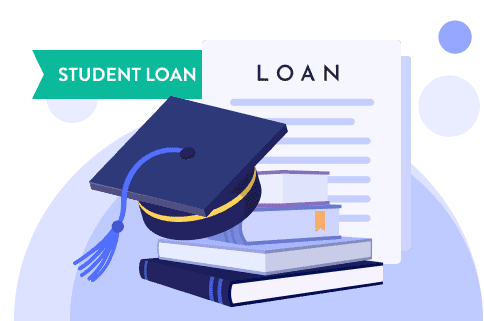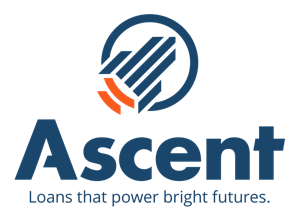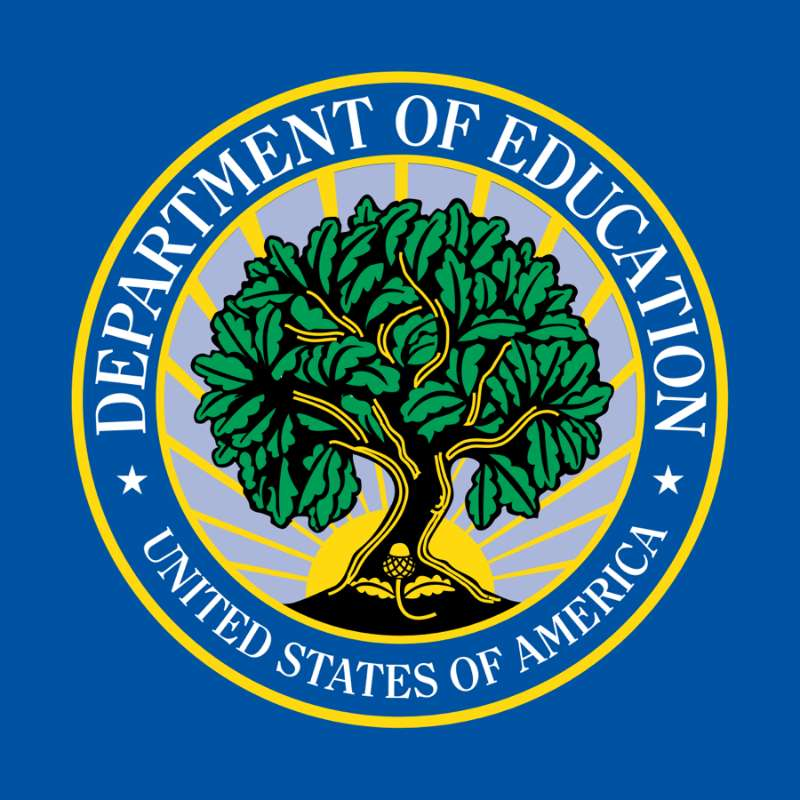Best Student Loans in Oregon of 2024

Updated: December 28, 2023
Advertising & Editorial Disclosure
The dream of higher education in Oregon is becoming increasingly expensive. If you’re a student in the Beaver State, you might be wondering how to finance your education without breaking the bank. The answer lies in finding the best student loans in Oregon.
The best option for you may vary depending on your particular needs and situation. MoneyGeek found that College Ave is Oregon's best overall student loan lender. Consider Earnest if you’re looking for the lowest interest rates or Ascent if you have bad credit. Score the best deal from MPower Financing if you’re an international student, or Discover if you need a co-signer.
Understanding Student Loans
Student loans are financial instruments designed to help you afford the rising costs of higher education. They provide the necessary funds to cover tuition, books and sometimes living expenses, allowing you to focus on your academic pursuits.
When you secure a student loan, you're essentially entering into a contract to borrow money that you'll repay over time, usually with interest. After you've completed your education, you'll enter a repayment phase, which may include a grace period. During this time, interest continues to accrue on the loan amount.
There are two main types of student loans:
Federal student loans: Funded by the federal government, federal student loans often feature lower interest rates and more generous repayment terms.
Private student loans: Issued by private lenders, private student loans usually come with higher interest rates and less forgiving repayment options.
It's imperative to understand the nuances between federal and private student loans. Federal loans offer various benefits like forbearance options and the potential for loan forgiveness, which are generally not part of the package with private loans. This knowledge can be a game-changer in managing your finances effectively during your educational journey.
Best Private Student Loans in Oregon
Non-federal sources, such as banks or other financial institutions, provide private student loans. If you find that federal aid isn't stretching far enough to cover your educational expenses, these loans can be a viable option. They can also be a lifesaver for covering costs that federal loans won't touch, like specialized vocational training or study-abroad experiences.
Navigating the world of private student loans requires a keen understanding of their benefits and drawbacks. On the upside, you might find that you can borrow more money and get approved more quickly. However, the downsides can be steep. These loans often come with higher and variable interest rates. Additionally, the repayment terms are generally less accommodating than federal loans.
- College Ave
- 4.43% - 17.99%Fixed APR Range
- 5.59% - 17.99%Variable APR Range
- $1,000 minimum, no maximumLoan Amount Range
- Not requiredCo-Signer
College Ave is a private student loan company that offers loans for undergraduates, graduates and parents of college students. It provides flexibility in repayment terms and loan options.
Pros
- Variety of loan products, including undergraduate, graduate and parent loans.
- Multiple repayment options, including interest-only payments while in school.
- No origination fees or prepayment penalties.
Cons
- Requires a credit check, potentially making it hard for students with no or low credit history.
- Doesn't offer loan prequalification, so you won't know your rate until you apply.
- Co-signer release only after half the loan term has passed.

College Ave
Best Overall
- Earnest
- 4.43% - 14.90%Fixed APR Range
- 5.32% - 16.20%Variable APR Range
- $1,000 upLoan Amount Range
- Allowed Co-Signer
Earnest is a technology-enabled fintech lender offering low-interest private student loans and refinancing.
Pros
- Offers flexible repayment terms and forbearance options.
- No origination or prepayment fees.
- Provides loan prequalification so you can check rates without affecting your credit.
Cons
- Requires a good credit history, which might be a hurdle for some borrowers.
- Not available in all U.S. states.
- No co-signer release option.

Best With Lowest Interest Rates
- Ascent
- 4.36%–14.08%Fixed APR Range
- 1.47%–11.31%Variable APR Range
- $2,001–$200,000Loan Amount Range
- Non-U.S. citizens and temporary residentsCo-Signer
Ascent is a private student loan lender providing loans for college and graduate students. It offers both co-signed and non-co-signed loan options.
Pros
- Offers both co-signed and non-co-signed loan options.
- Provides an option for a 1% cash back graduation reward.
- Offers loan prequalification so you can check rates without affecting your credit.
Cons
- For non-co-signed loans, you must meet certain eligibility requirements, like a minimum GPA.
- Loans are unavailable for international students.
- Higher interest rates for non-co-signed loans.

Ascent
Best for Borrowers With Bad Credit
- Federal Parent PLUS Loan
- Starts at 7.54%Fixed APR Range
- Not SpecifiedVariable APR Range
- Up to the total cost of attendanceLoan Amount Range
- OptionalCo-Signer
Federal Parent PLUS Loans are part of the federal Direct Loan Program and are available to parents of dependent undergraduate students to help pay for education expenses.
Pros
- Available to parents regardless of the student's financial need.
- Loan funds are sent directly to the school.
- Fixed interest rates for the life of the loan.
Cons
- Requires a credit check.
- Has a higher interest rate compared to other federal student loans.
- Origination fee is deducted from each loan disbursement.

Federal Parent PLUS Loan
Best for Parents
- MPower Financing
- 13.72% – 15.01%Fixed APR Range
- Not SpecifiedVariable APR Range
- $2,001 up to $100,000Loan Amount Range
- Not requiredCo-Signer
MPower Financing offers student loans to both domestic and international students without requiring a credit history or a co-signer.
Pros
- No co-signer or credit history required.
- Available to international students.
- Offers interest rate discounts for certain behaviors like on-time payments.
Cons
- Loan amounts are limited.
- Higher interest rates compared to other lenders.
- Not available for all schools or programs.

MPower Financing
Best for International Students
- Discover
- 3.99%–11.59%Fixed APR Range
- 1.79%–11.09%Variable APR Range
- $1,000 up to 100% of college expensesLoan Amount Range
- Optional Co-Signer
Discover is a well-known financial institution that offers private student loans for undergraduate and graduate students, in addition to student loan refinancing.
Pros
- Offers a one-time cash reward for good grades on each new student loan.
- Multiple repayment options available.
- No origination fees, late fees or prepayment penalty.
Cons
- Requires a credit check, which could be a hurdle for some borrowers.
- Doesn't offer prequalification, so you won't know your rate until you apply.
- No co-signer release option.

Discover
Best for Those That Need A Co-Signer
Federal Student Loans in Oregon
Federal student loans are loans backed by the U.S. government to support students in funding their education. They come with a range of benefits and federally mandated terms that often make them more favorable than private loans.
Lower interest rates: Federal loans usually have interest rates that are not only lower but also fixed, providing predictability in your financial planning. This can substantially affect the total amount you'll repay, offering long-term financial relief.
Varied repayment options: Federal student loans offer multiple repayment plans, including graduated and extended repayment options. These choices allow you to select a plan that aligns with your career trajectory and expected future income.
Loan forgiveness opportunities: Certain federal loans qualify for loan forgiveness programs, which can be particularly beneficial if you're planning a career in public service or health care. These options can significantly reduce your long-term debt, making your chosen profession more financially sustainable.
Deferment and forbearance: Federal loans come with options to temporarily halt payments without affecting your credit score if you face financial difficulties. This can be a crucial safety net, helping you navigate unforeseen financial challenges without accruing penalties.
No credit checks: Federal loans often don't require a credit check, especially for undergraduate students. This makes higher education financially accessible even if you haven't had the opportunity to build a strong credit history.
For these reasons, many students opt for federal loans as their first choice for financial aid.
How to Apply for Federal Student Loans in Oregon
The application process for federal student loans is a structured journey designed to help you secure the financial aid you need for your education. Each step aims to assess your eligibility and ensure you understand the responsibilities of borrowing. Here's a comprehensive guide to help you navigate this important financial milestone.
Organize financial documents
First, you'll need to gather all your financial documents, including your Social Security card, federal tax returns and any W-2 or 1099 forms. These documents are the cornerstone of your application and will be used to determine your eligibility for federal aid. Having them ready in advance will expedite the application process and minimize errors.
Complete the Free Application for Federal Student Aid
The Free Application for Federal Student Aid (FAFSA) is your primary application for all types of federal aid, including loans. The FAFSA is available online and requires detailed financial information from the documents you gathered earlier. Submitting an accurate FAFSA is essential for maximizing your financial aid package.
Review your Student Aid Report
After processing your FAFSA, you'll receive a Student Aid Report (SAR) summarizing your financial situation. This report includes your Expected Family Contribution (EFC), which schools use to determine your financial aid package. Make sure to review the SAR for accuracy, as errors can impact your aid eligibility.
Assess financial aid offers
Once a program accepts you, you'll receive an offer outlining your federal loan eligibility. This is the time to carefully compare the terms of each loan, including interest rates and repayment options. Choose the loans that best fit your financial needs and future repayment capabilities.
Accept or decline aid
After reviewing your financial aid package, you'll need to accept or decline your aid. This usually involves logging into your school's financial aid portal and following specific instructions. Remember, you're not obligated to accept all the aid offered; only take what you need.
Complete entrance counseling
Many schools require first-time federal loan borrowers to complete entrance counseling. This online session helps you understand your rights and responsibilities as a borrower. It's a mandatory step before loan disbursal.
Sign the Master Promissory Note
The final step is signing the Master Promissory Note (MPN), a legally binding document that outlines the terms of your loan. Read this document carefully, as it details your obligations regarding repayment and the consequences of default. Once you sign the MPN, your lender will disburse the loan funds to your school.
The Types of Federal Student Loans Available in Oregon
Understanding the types of federal student loans is crucial for making an informed decision about financing your education. Each loan type has distinct terms and conditions that affect your financial future. Here's a detailed look at the four primary federal student loan types.
Direct Subsidized Loans: These are ideal for undergraduates who can prove financial hardship. The government shoulders the interest costs while you're in school, during your post-graduation grace period and during any deferment periods. This can make a substantial difference in the total amount you repay.
Direct Unsubsidized Loans: These loans are open to both undergraduate and graduate students without the requirement to demonstrate financial need. However, interest begins accruing immediately upon disbursement. If you don't make interest payments while in school, the interest will capitalize, adding to the loan's principal amount.
Direct PLUS Loans: These loans have a credit check requirement and aim to support graduate students and parents. They offer higher loan amounts but also carry higher interest rates and an origination fee. They help cover costs that other financial aid options don't, but it's crucial to be aware of the higher repayment amounts.
Direct Consolidation Loans: This loan type lets you combine various federal student loans into one loan with a single interest rate. The rate is a weighted average of the loans you're consolidating. While this can simplify your repayment strategy, it may extend the loan term, potentially increasing the interest paid.
Depending on your needs and circumstances, you may need to apply for multiple types of federal loans to support your academic journey.
Student Loan Forgiveness in Oregon
Student loan forgiveness is a financial program allowing borrowers to waive a portion or all of their student loans under specific conditions. These conditions often involve working in certain professions or fulfilling a service commitment in designated areas.
In Oregon, several state-specific programs offer student loan forgiveness, particularly for borrowers in fields like health care and public service.
Oregon Partnership State Loan Repayment Program (SLRP)
The Oregon Partnership State Loan Repayment Program (SLRP) aims to attract primary care providers to serve in Health Professional Shortage Areas (HPSAs) within the state. Qualified health care providers can receive up to 50% of their total qualifying educational loan debt for a maximum of $25,000 per obligation year for a two-year service commitment.
To be eligible, you must be a licensed healthcare provider in disciplines ranging from medicine to dentistry to mental health. You must also provide primary care services in an outpatient ambulatory care setting. The application process involves submitting an online application and supporting documents, such as proof of educational loans and employment verification in an HPSA.
Oregon Health Care Provider Loan Repayment
The Oregon Health Care Provider Loan Repayment program is a targeted initiative that aims to improve healthcare access in underserved communities across Oregon. Qualified participants can receive a tax-free award of 70% of their qualifying educational loan debt, up to $50,000 per obligation year, for a three-year minimum service obligation.
To qualify, you must have an unrestricted state license in one of the qualifying health professions, including physicians, nurses and pharmacists. You must also provide primary care in an outpatient setting at an eligible site in an underserved area of Oregon. The application process involves submitting a completed form to the Oregon Office of Rural Health.
Public Service Loan Forgiveness (PSLF) Program
While the Public Service Loan Forgiveness (PSLF) Program is not specific to Oregon, residents of the state who work in public service sectors can certainly benefit from it. This federal program offers complete loan forgiveness for the remaining balance of your Direct Loans after 120 qualifying monthly payments under an approved repayment plan.
To be eligible, you must be employed full-time by a qualifying employer, a government organization or certain types of non-profit organizations. You must also have Direct Loans (or consolidate other federal student loans into a Direct Loan) and enroll in an income-driven repayment plan. You can apply for PSLF through the Education Department after making 120 qualifying payments.
Tips for Managing Student Loans
Student loan management is a critical aspect of your financial life that requires thoughtful planning and execution. To help you navigate this complex landscape, here are some practical tips:
Scholarships and Grants as Alternatives
When financing your education, scholarships and grants are the golden tickets. Unlike loans, which are more like financial contracts that require you to pay back the principal amount with interest, scholarships are rewards for your skills, achievements or potential. Grants are similar but are usually distributed based on financial necessity rather than merit.
Here are some steps for Oregon residents to maximize their chances of landing these non-repayable financial awards.
Start with state-specific resources: Your first stop should be resources that aim to support Oregonians. Websites like the Oregon Office of Student Access and Completion (OSAC) offer a wealth of information on state-specific scholarships and grants, making it easier to find opportunities that are a good fit for you.
Evaluate eligibility criteria: Each scholarship and grant comes with its own qualifications, such as academic standing, field of study or community involvement. Carefully review these criteria to ensure you're applying for scholarships and grants where you meet or exceed the requirements.
Assemble required documentation: Prepare all the necessary paperwork, such as academic records, financial information and letters of recommendation. Having these documents at your fingertips will make the application process smoother and help you meet any fast-approaching deadlines.
Craft a standout personal statement: If the application calls for a personal essay or statement, invest time in creating a compelling narrative. This is your chance to go beyond the numbers and statistics, offering the scholarship committee insight into your character, goals and why you're an ideal candidate.
Organize deadlines and requirements: Keep a detailed list of all the deadlines and submission requirements for each scholarship and grant. Use digital tools like task management apps to set reminders, ensuring you never miss a deadline or overlook a required document.
Submit and verify applications: Once you've completed your applications, submit them and make sure to follow up. A quick email to the scholarship or grant committee can confirm receipt of your application and demonstrate your keen interest in the opportunity.
The most compelling benefit of scholarships and grants is that they offer a form of financial liberation. These opportunities don't tether you to a repayment schedule that could dictate your life choices for years to come, giving you the freedom to pursue opportunities that may not offer immediate financial gratification but are rich in other rewards.
The Impact of Student Loans on Credit
Think of your student loans as a long-term investment in your credit score. They can be a stepping stone to a healthy financial future when managed wisely. Timely payments on your student loans are like positive reviews for your creditworthiness, making you an attractive candidate for future loans or credit extensions.
However, mismanagement of this financial responsibility can lead to a cascade of negative consequences. Late payments are like red flags that signal to lenders that you're a risky borrower. This can result in less favorable terms for future credit needs, such as higher interest rates or more stringent approval requirements.
The ultimate financial misstep is defaulting on your student loans. This is akin to declaring bankruptcy in the world of credit scores. Not only does it severely damage your credit, but it also triggers a series of punitive measures like wage garnishment and potential legal action. The repercussions of a default can linger for years, affecting various aspects of your life, from buying a car to securing a rental agreement.
Frequently Asked Questions
We addressed some frequently asked questions about student loans in Oregon to equip you with the information you need to make financially sound decisions for your educational journey.
If you're an Oregon resident seeking federal student loans, you'll need U.S. citizenship or eligible non-citizen status, a valid Social Security number and enrollment in an accredited educational institution at least half-time. For private loans, the eligibility landscape varies by lender. Generally, a solid credit history is essential, either on your part or that of a co-signer.
To get started with federal student loans in Oregon, you'll need to fill out the FAFSA. This form is your entry point to all federal financial aid, including loans. For private loans, you'll generally apply directly through the lender, which often involves an online application and a credit check.
The government awards subsidized federal loans based on financial need. These come with the benefit of the government paying the interest while you're in school or during deferment periods. Unsubsidized loans are not need-based, and interest begins accruing immediately upon disbursement.
Federal student loans usually feature fixed interest rates set by the government. Private loans can offer either fixed or variable interest rates, which the lender and your creditworthiness determine. Over time, the accrued interest is added to the principal amount, increasing the total debt you'll need to repay.
Federal student loans offer a range of repayment plans, including Standard, Graduated and Income-Driven Repayment Plans. Private loans are less flexible, with repayment terms set by the lender, which can range from fixed to variable interest rates and different loan terms.
Failing to repay your student loan can lead to default. For federal loans, default typically occurs after 270 days of missed payments. The repercussions may be severe and can include wage garnishment, a significant drop in your credit score and potential legal action. Private loans can default much sooner, depending on the lender's terms.
Student loan forgiveness programs can remove some or all of your student loan debt under specific conditions. Eligibility for these programs typically ties to your profession and commitment to serve in specific roles or locations for a certain amount of time.
About Christopher Boston

sources
- Federal Student Aid. "FAFSA Application." Accessed September 7, 2023.
- Federal Student Aid. "Public Service Loan Forgiveness (PSLF)." Accessed August 29, 2023.
- Oregon Office of Rural Health. "Oregon Health Care Provider Loan Repayment." Accessed August 29, 2023.
- Oregon Office of Rural Health. "Oregon Partnership State Loan Repayment Program (SLRP)." Accessed August 29, 2023.
- Oregon Student Aid. "Home." Accessed September 7, 2023.
Editorial Disclosure: Opinions, reviews, analyses and recommendations are the author’s alone and have not been reviewed, endorsed or approved by any bank, credit card issuer, hotel, airline, or other entity. Learn more about our editorial policies and expert editorial team.
Advertiser Disclosure: MoneyGeek has partnered with CardRatings for our coverage of credit card products. MoneyGeek and CardRatings may receive a commission from card issuers. To ensure thorough comparisons and reviews, MoneyGeek features products from both paid partners and unaffiliated card issuers that are not paid partners.